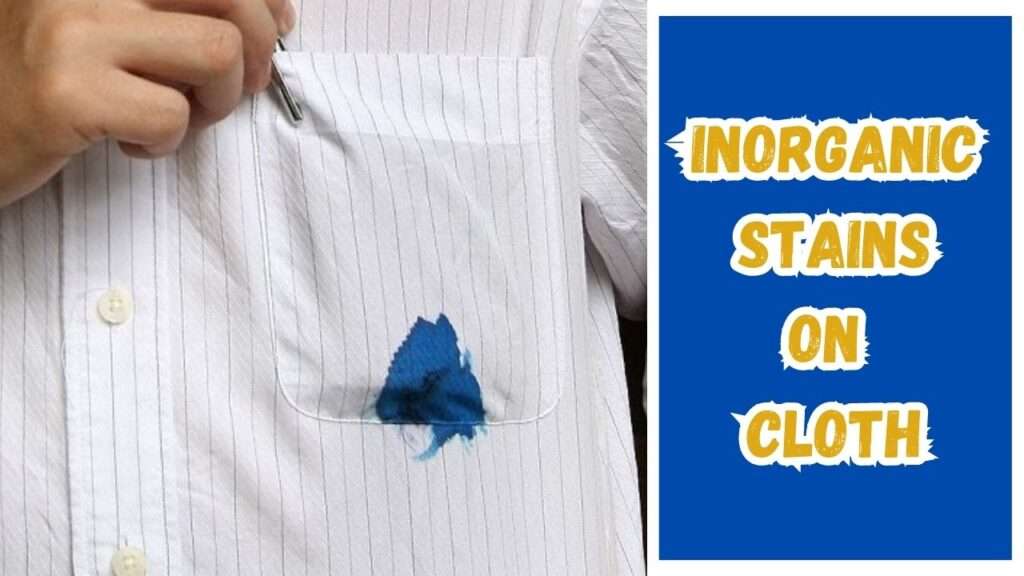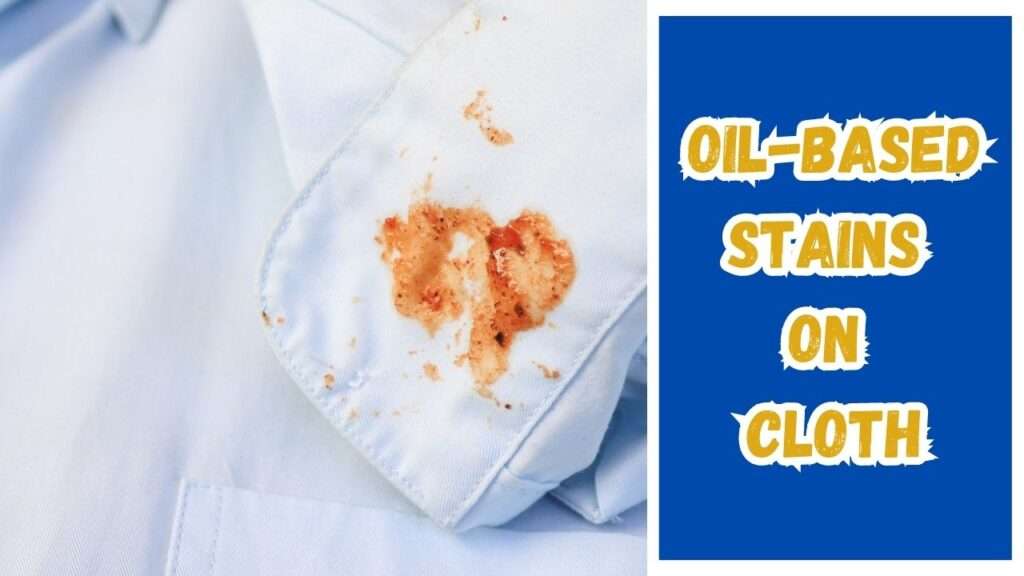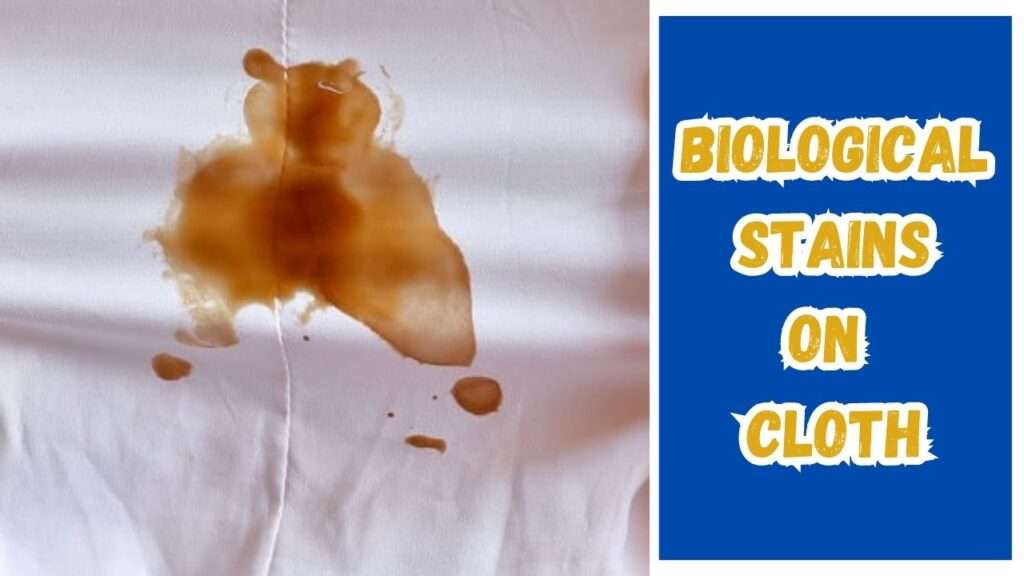“Discover the ultimate guide to the best stain remover for clothes. Say goodbye to stubborn stains with expert tips and top product recommendations. Revitalize your wardrobe effortlessly today!”
Stains on our favorite clothes can be frustrating and disheartening. Whether it’s a coffee spill, ink mark, or sauce splatter, stains are known for appearing at the most inconvenient times.
But fear not because, in this article, we’ll unveil the best stain removers that will help you revitalize your wardrobe effortlessly. Say goodbye to stubborn stains and hello to refreshed and vibrant clothing!
The Battle Against Stubborn Stains
Stains are an inevitable part of life, but they don’t have to spell doom for your favorite garments. With the right stain remover in your arsenal, you can rescue your clothes from the clutches of stubborn marks and spots.
Whether you’re a seasoned laundry pro or a novice in stain removal, this article will equip you with the knowledge and tools to conquer even the toughest stains.
Understanding Different Types of Stains
Stains are unwanted discolorations that can mar the appearance of various surfaces. They result from absorbing foreign substances into materials like fabrics, wood, or surfaces. Different types of stains require specific cleaning approaches to remove them effectively.
Common categories of stains include:
Organic Stains: These originate from organic materials like food, beverages, blood, and bodily fluids. Treating organic stains quickly with cold water, mild detergents, or enzymatic cleaners can prevent them from setting.
Inorganic Stains:

Non-organic substances like rust, hard water deposits, and ink cause these. Acidic solutions like vinegar or lemon juice can help remove these stains, but caution is needed to avoid damaging the material.
Oil-Based Stains: These result from oils, grease, or fats. They require absorbing agents like talcum powder or cornstarch to lift the oils from the surface before cleaning with appropriate solvents.

Dye-Based Stains occur when a colored substance transfers onto a surface, as with colored drinks or fabrics. Fast action with cold water and stain-specific treatments is essential to prevent permanent discoloration.
Biological Stains:

Mold, mildew, and algae cause these stains commonly found in damp environments. Using bleach or specialized cleaners can eradicate these stains and prevent their return.
Combination Stains: Some stains are a mix of various substances, making them more complex to remove. Identifying the primary stain components and tackling them sequentially yields the best results.
Effectively combating stains involves a combination of prompt action, appropriate cleaning agents, and a gentle touch to preserve the integrity of the material. Always test any cleaning method on a small, inconspicuous area before directly applying it to the stain.
Remember that the success of stain removal often depends on the type of material and the nature of the stain, so adapting your approach is key.
The Science Behind Effective Stain Removal
Effective stain removal relies on understanding the chemical and physical properties of stains and fabrics. Stains are composed of molecules that bond to fibers, requiring specific solvents or detergents to break these bonds.
Enzymes in detergents target organic stains, while surfactants lift stains from fabrics. Temperature influences molecular activity; higher temperatures enhance stain dissolution. However, heat can also set certain stains, demanding immediate treatment.
Mechanical action, like rubbing, aids detachment. Overall, successful stain removal balances chemistry, fabric type, and prompt treatment to dissolve, lift, and rinse away stains without damaging fabrics.
Top 5 Stain Removers for Common Stains
Coffee and Tea Stains
Coffee spills are a common morning mishap. To combat these stains, look for stain removers with enzymes that target the proteins in coffee and tea. Gently blot the stain before applying the remover, and watch the magic happen.
Ink and Pen Marks
Ink stains need careful handling. Opt for a stain remover specially formulated for ink removal. Remember, quick action is key to preventing the ink from setting in.
Grease and Oil Stains
Grease stains don’t stand a chance against powerful degreasers. Apply the stain remover directly to the stain, let it sit, and then wash as usual.
Wine and Fruit Juice Stains
These colorful stains can be daunting, but oxygen-based stain removers work wonders. Treat the stain and let it sit before laundering as usual.
Grass and Mud Stains
Active outdoors? Grass and mud stains don’t have to ruin your day. Pre-treat the stain with a stain remover and let it penetrate before washing.
Natural vs. Commercial Stain Removers: Pros and Cons
The choice between natural and commercial stain removers hinges on a balance of effectiveness, safety, and environmental impact.
Natural Stain Removers:
Pros:
Natural options like vinegar, baking soda, and lemon juice are often readily available, cost-effective, and environmentally friendly.

They pose minimal risks to human health and don’t release harmful chemicals into the environment. They can effectively handle mild stains, such as those caused by food, sweat, and some organic materials.
Cons:
While natural options can be effective for certain stains, they might struggle with tougher or specific stains like ink, oil, and certain dyes. They may require longer treatment times and more effort, and their results can be inconsistent.
Commercial Stain Removers:
Pros:
Commercial stain removers, with their specialized formulations, are designed to precisely tackle a wide range of stains. They often contain enzymes, surfactants, and chemicals tailored to specific stain types. This leads to more reliable and quicker stain removal, which is especially important for tough stains.
Cons:
Many commercial stain removers contain synthetic chemicals that could cause skin irritation or have environmental consequences. Some products might also contain fragrances or dyes that can leave residues or trigger allergies.
Additionally, they often come in single-use plastic containers, contributing to waste.
The choice between natural and commercial stain removers largely depends on the type of stain, the fabric, and personal preferences. For mild stains and eco-conscious individuals, natural options are appealing.
However, commercial stain removers might be more suitable for challenging stains and quicker results. A cautious approach could involve having a mix of both options – relying on natural remedies for more superficial stains and turning to commercial products for tougher stains when necessary.
Always read labels, follow instructions, and prioritize safety and environmental considerations.
How to Properly Apply Stain Removers for Best Results
Achieving optimal stain removal outcomes demands a meticulous approach to applying stain removers. Here’s a comprehensive guide to ensure the best results:
- Act Quickly: Tackle stains promptly to prevent them from setting. Blot or scrape off excess material without spreading the stain further.
- Patch Test: Before applying any stain remover, test it on an inconspicuous area of the fabric to ensure it doesn’t cause color fading or damage.
- Choose the Right Remover: Select a stain remover that suits the stain type and fabric. Enzyme-based removers work well on protein-based stains like blood, while solvent-based ones are effective for oil and grease.
- Application: Apply a small amount of the stain remover directly to the stained area. Use a clean cloth, sponge, or soft brush to work the product into the fabric gently. Avoid aggressive rubbing to prevent pushing the stain deeper.
- Pre-soak: For heavily stained items, consider pre-soaking. Dilute the stain remover as directed, immerse the fabric, and let it sit for the recommended time.
- Time Matters: Allow the stain remover time to break down the stain. Follow the manufacturer’s instructions for the appropriate duration. Take your time with this step.
- Rinse or Blot: After soaking, rinse the fabric thoroughly with cold water or blot with a clean, damp cloth to remove the stain remover residue.
- Inspect Before Drying: Before drying the fabric, inspect the stained area under good lighting. If the stain is still visible, refrain from heat drying, as it can set the stain permanently.
- Launder as Usual: Wash the fabric as per its care label instructions, preferably with an enzyme-based laundry detergent. Check the stain after washing; avoid dryer usage until the stain is fully gone.
- Repeat if Necessary: Stubborn stains may require multiple treatments. If the stain persists, repeat the process or consider seeking professional help.
Caution: Read and follow the instructions on the stain remover label carefully. Some products may require ventilation or protective gloves.
Combining the appropriate stain remover with a meticulous application process increases the chances of successfully banishing stains and extending the life of your fabrics.
Stain Removal Tips and Tricks from the Experts
Act Fast: The Sooner, the Better
The golden rule of stain removal is to act quickly. Delaying treatment can make stains harder to remove.
Blot, Don’t Rub
When dealing with stains, resist the urge to rub aggressively. Blotting helps prevent the stain from spreading.
Pre-treat Before Washing
Pre-treating stains before tossing clothes into the washing machine can significantly enhance the chances of complete removal.
Testing on Unseen Areas
Before applying a stain remover, always test it on an inconspicuous area of the fabric to ensure it won’t cause discoloration or damage.
Sunlight as a Natural Stain Remover
Harness sunlight’s power to lighten and naturally remove stains from your clothing.
Extending the Lifespan of Your Clothes: Preventing Stains in the First Place
Preserving the longevity of your clothing begins with proactive measures to prevent stains. Adopting simple habits can significantly extend the lifespan of your garments:
- Pre-Stain Prep: When donning clothes, consider applying antiperspirant or deodorant and letting it dry before getting dressed. This minimizes the risk of unsightly sweat stains.
- Eat and Drink Mindfully: Be cautious while consuming foods and beverages prone to spills, like red wine or sauces. Utilize napkins and take your time to avoid accidents.
- Layering: Wear an apron while cooking or an old shirt while painting or doing messy tasks. This acts as a barrier against potential stains.
- Stain-Resistant Treatments: Invest in stain-resistant sprays or treatments for vulnerable items. These coatings create a protective barrier, making stains easier to clean.
- Fast Action: Address stains promptly to prevent them from setting. Blot or scrape off excess immediately, and if possible, rinse with cold water.
- Wash Hands: Clean hands before handling garments, as oils, lotions, or dirt can transfer onto fabric and lead to stains.
- Storage Strategy: Hang or fold clothes neatly to prevent wrinkling and potential stains. Use appropriate hangers to avoid stretching the fabric.
- Separate Laundry: Sort laundry by color and fabric type to prevent color bleeding and dye transfer. Empty pockets to avoid surprises like ink stains.
- Follow Care Labels: Adhere to care instructions on clothing labels. Improper washing or drying can damage fibers and make fabrics more susceptible to stains.
- Kids and Pets: Be cautious around children and pets, as unexpected spills or accidents can happen. Opt for machine-washable fabrics for their clothing.
- Outdoor Awareness: Avoid sitting on dirty surfaces outdoors and watch out for potential stain-causing elements like mud or grass.
- Eating Accessories: Use bibs for young children during meals and a napkin tucked into your shirt collar to catch food spills.
- Cautious Makeup Application: Put on makeup before getting dressed to avoid smudges on clothing, especially around collars and necklines.
By integrating these practices into your daily routine, you proactively safeguard your clothing from stains, prolong its lifespan, and reduce the frequency of stain removal efforts.
Conclusion
A Stain-Free Wardrobe Awaits You Say Goodbye to the Frustration of Stubborn Stains. With the right stain remover and proper techniques, your wardrobe can stay vibrant and spotless. Embrace the stain-fighting knowledge you’ve gained and enjoy a fresh, stain-free clothing collection.
FAQs
Q. Are natural stain removers as effective as commercial ones?
Natural stain removers can be effective for some stains, but commercial products often have specialized formulas for tough stains.
Q. Can I use bleach to remove stains?
Bleach can be harsh on fabrics and may cause discoloration. It’s best to opt for stain removers designed for specific stains.
Q. How do I remove old, set-in stains?
Old stains require patience and persistence. Pre-treat with a stain remover, let it sit, and consider repeating the process before laundering.
Q. Are there eco-friendly stain remover options?
Yes, many eco-friendly stain removers are available. Look for products with biodegradable ingredients and eco-certifications.
Q. Can I use stain removers on delicate fabrics?
Some stain removers may be too harsh for delicate fabrics. Always check the label and test on a small area before applying to the entire garment.
Read More: 10 Essential Cleaning Tools Every Homeowner Needs